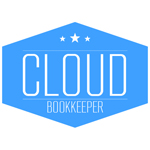A recent report from market research firm Markets and Markets reveals that the cloud market is expected to grow to $121 billion dollars by 2015: a 26% compound annual growth rate from the $37 billion value in 2010.
A large proportion of the growth of the cloud services sector is being driven by rapid adoption of Software-as-a-service platforms, which are saving businesses on the cost of licensing, management, and deployment of software and hardware for productivity and collaboration.
Infrastructure-as-a-service is also expected to grow rapidly as a platform on which businesses will host their own SaaS solutions and for other business critical infrastructure deployments.
Much of the growth is being driven by larger companies that have previously been reluctant to invest in cloud infrastructure because of concerns of vendor lock-in, lax security, and the difficulty of developing cloud solutions that are tailored to their specific requirements.
As the cloud sector has matured and begun to react to these concerns, solutions have been put in place that reassure IT influencers that the obvious benefits of cloud deployment don’t carry a sting in the tail.
One aspect of that reassurance is the development of open cloud APIs and standards that allow for the portability and control of data and cloud-deployed applications, providing business with the necessary flexibility to tailor solutions to their short and long-term goals.
Open APIs and standards help to create an open market and foster innovation and differentiation within the cloud space. The ability of companies to assess individual vendors on merits like availability and performance gives them the flexibility they need to be confident of cloud investment.
The opening of the cloud also enables the development of federated cloud environments. Companies can select from the available vendors to build interoperable multi-cloud environments, choosing the components that best fit their particular needs.
Cloud marketplaces that empower businesses to orchestrate tailored conglomerations of cloud compute, storage, and networking infrastructure strengthen the position of cloud vendors when companies are balancing the benefits of cloud deployments and traditional colocation or in-house infrastructure provisioning.
Cloud marketplaces augment the existing benefits of the cloud: on-demand pricing that lowers capital expenditure, fast deployments that allow businesses to remain agile, reactive scaling both up and down, and flexible APIs that allow for the automation of infrastructure orchestration. The cloud marketplace layer enhances the value of the cloud by providing centralized control for an increasingly differentiated set of vendors.
The substantial year-on-year increases in cloud uptake can be attributed to an erosion of cloud skepticism in the enterprise and the willingness of cloud vendors to hear what companies are saying and work towards providing platforms and marketplaces to meet their needs.


